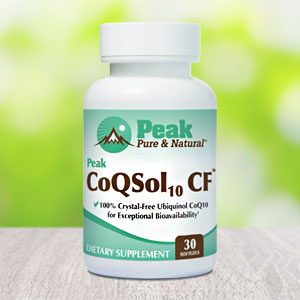Get Easy Health Digest™ in your inbox and don’t miss a thing when you subscribe today. Plus, get the free bonus report, Mother Nature’s Tips, Tricks and Remedies for Cholesterol, Blood Pressure & Blood Sugar as my way of saying welcome to the community!
4+ ways strength training protects you from disease and frailty

We know by now that exercise is not an option… but not for the reason most often associated with exercise, like getting in shape.
Without some form of regular exercise, it will be hard to live a long, full, healthy life, and remaining independent as you get older will be a challenge. This really is a case of “use it or lose it.”
For someone like me who does not necessarily take great pleasure in exercise, especially in the winter, walking is a perfect activity. I can feel my heart pumping and my muscles working (sometimes aching!), telling me that something good is actually coming of all this moving and sweating.
If you’re trying to decide what type of exercise is right for you, it’s important to know what benefits come with different types of exercise. That way, you can tailor your exercise regimen to your particular health needs.
For me, it’s all about getting and staying strong. My heart and lungs are functioning well, thank God, and I have no family history of heart disease.
If anything will shorten my life or make it less fulfilling as I get older, it will be weakening muscles and waning energy that do me in. What I need most is strength training.
I know there are more people like me out there. So, here’s a primer on how strength training differs from aerobic exercise, the specific health benefits you can expect from a regular strength training practice, and how to get started.
Strength training vs aerobic exercise
Aerobic exercise, like running or swimming, is designed to make your heart stronger and to help your body use oxygen more efficiently.
Strength training, like lifting weights and using resistance bands, builds muscles and helps them function optimally.
That’s not to say that aerobic exercise doesn’t help your bones, or that strength training doesn’t help you live longer.
In fact, one study showed that older adults who strength trained were 41 percent less likely to die from a cardiac event and 19 percent less likely to die from cancer.
Strength training isn’t just about getting stronger
First, here are four health-boosting things that will happen to your body when you do strength training on a regular basis.
- Stronger bones. As we age, osteoporosis becomes more likely. When bone loss begins to outpace the creation of new bone, our bones become thin, brittle and more likely to break from ordinary activities, like lifting or bending. Strength training can prevent this, or keep it from getting worse by triggering bone-forming cells into action. And the joints we use while in training – our hips, spine, and wrists – are also the spots most likely to be affected by osteoporosis.
- Weight loss. Strength training can rid the body of fat, and help you burn more calories. And, keeping your muscles healthy can help prevent injuries that will land you in a sedentary lifestyle that shortens your life expectancy.
- Improves balance. Strengthening your leg muscles can help counteract the weakness and frailty that can occur with age. Exercises like leg extensions, as well as simply walking, can strengthen the lower half of your body. A stronger lower half, and better balance, will help avoid a deadly hip fracture.
- More flexibility. Building the muscles around your bones lubricates joints and eases swelling. If you have stiffness from arthritis, this is especially helpful.
Getting started with strength training
You don’t need a gym membership to reap the benefits of strength training. You don’t even need any equipment. Here are a few tips for getting started.
Focus on equipment-free routines first. Strength training is using resistance to create work for your muscles. Pushups and squats fit the bill.
Start slow. Begin with two 20-minute sessions on two days during the week, and work your way up to three to five days a week for 45 minutes. Take your time – any amount of strength training you do will have its benefits.
Hydrate and eat. “Drink lots of water and thank your body for what it was just able to accomplish,” says Hannah Davis, a certified strength and conditioning specialist. Davis says it’s best to eat a snack with a balance of carbs to refuel your energy and protein to rebuild muscle.
If you’re limited in the kind of exercise you can do, bear in mind that yoga is also considered strength training, and is very helpful at improving balance.
The important thing is to get started.
Editor’s note: Did you know that when you take your body from acid to alkaline you can boost your energy, lose weight, soothe digestion, avoid illness and achieve wellness? Click here to discover The Alkaline Secret to Ultimate Vitality and revive your life today!
Sources:














